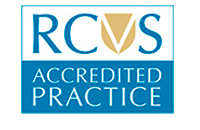Emergency contact: 01707 666399
Canine stem cell therapy - information for dog owners
Why choose the RVC for your dog's canine stem cell treatment?
The RVC has been pioneering research and development of stem cell treatments for over 15 years. The knowledge we have gained from a proven successful track record in stem cell applications in horses has now been applied to canine clients for joint, tendon and ligament injuries. The collaboration between the RVC stem cell centre with its state of the art facilities and the orthopaedic clinic at the world leading Queen Mother Hospital for Animals, ensures your dog has the best clinic care and access to the most up to date and appropriate treatment
Exceptional quality standards for Stem Cell production and safety
At the RVC Stem Cell Centre, we prepare autologous mesenchymal stem cells in our Veterinary Medicines Directorate-licenced laboratory and under the same quality control as for horse stem cells. The Veterinary Medicines Directorate (VMD) is the UK government agency that regulates all veterinary medications. It is not currently a legal requirement for dog stem cells in the UK to be made to VMD standards, but adhering to these standards ensure the cells are safe and perform as expected.
What are stem cells and how does stem cell therapy work?
Mesenchymal stem cells (MSCs) are “adult” or tissue-resident stem cells. These cells are multipotent, meaning they have the ability to differentiate into several different specialised cell types, such as cartilage cells (chondrocytes), bone cells (osteoblasts) and fat cells (adipocytes). MSCs were first found in bone marrow, but have since been detected in many different tissues, including adipose tissue (fat) and umbilical cord blood. MSCs are naturally present in the body where they help to keep tissues functioning normally and assist with tissue regeneration following injury. Injecting stem cells into joints can reduce pain and increase limb function in dogs with osteoarthritis and degenerative joint disease. Injecting stem cells into injured tendons and ligaments can also aid the healing process. Whilst we still don’t completely understand the underlying mechanisms, current research suggests that the beneficial effects of stem cell therapy are more likely to be derived from their immunomodulatory properties, rather than being truly regenerative, however some degree of regeneration has been shown in some research.
What is the difference between stem cell therapy and platelet rich plasma (PRP)?
Platelet rich plasma (PRP) is another biological therapy that has gained a lot of interest in recent years. PRP is made by concentrating the platelets normally seen in low numbers in the blood. Platelets contain high levels of growth factors and other proteins which may be beneficial for the modulation of inflammation in joints. PRP is very quick and simple to prepare and therefore cheaper than stem cell therapy, however due to a lack of large studies published it is hard to say how effective PRP is, and it can vary in quality depending on how it is prepared.
Stem Cell Treatments for Dogs – Owners' Frequently Asked Questions
How does my dog receive stem cell treatments at the RVC?
- We can only accept a referral from your vet.
- Please ask them to arrange a referral for evaluation by our specialists at the RVC Queen Mother Hospital for Small Animals, in Potters Bar, Hertfordshire. Once referred, our reception staff will directly contact you to book an appointment.
- A small sample of fat is obtained under general anaesthesia, so your dog will not feel any discomfort during the procedure. This is a very quick and minor procedure usually carried out in one day. If it is performed in the morning then your dog will probably go home at the end of the day. If it’s carried out later in the day an overnight stay may be required.
- Typically, your dog’s stem cells will then be ready to be injected into your dog 7-10 days later. This injection is performed under sedation as a day case process, usually only a few hours in total.
How long does it take for my dog to recover from the stem cell procedures?
The recovery period for these procedures is short and your dog will likely go home the same day. Following treatment, we usually recommend 2 days of rest followed by on-lead exercising for 7-10 days.
How long after treatment should I expect to see an improvement in my dog’s condition?
This varies from client to client, but we would expect to see improvements after about 10 to 14 days.
Are there any negative side effects or risks associated with canine stem cell therapy?
Although extremely rare, all anaesthetics and sedations carry a very small potential risk, and there is a very small risk of infection associated with a joint injection. All possible precautions are taken to minimise all risks.
How long do the effects of stem cell therapy in dogs last?
The effects of stem cell therapy can last up to eight months or longer, but again this varies between individuals. We also use cryopreservation. This means we can potentially freeze your dog's stem cells for additional stem cell therapy is requested in the future. This is often the case for dogs with arthritis, where a repeat treatment six or 12 months later can be beneficial. Cryopreserved cells are stored for up to two years.
Will my dog be treated with stem cells from other dogs?
At the RVC, only cells acquired from your dog will be injected into them (autologous therapy). This minimises any risks of an adverse reaction.
Can I pay for canine stem cell therapy with my pet insurance?
Stem cell therapy is covered by many pet insurance policies, but you will need to contact your insurance company to check if it is covered by your policy.
Do you offer platelet rich plasma (PRP) treatment at the RVC?
We don’t currently offer PRP as a stand-alone treatment at the RVC, but we can offer it in conjunction with stem cell therapy.

